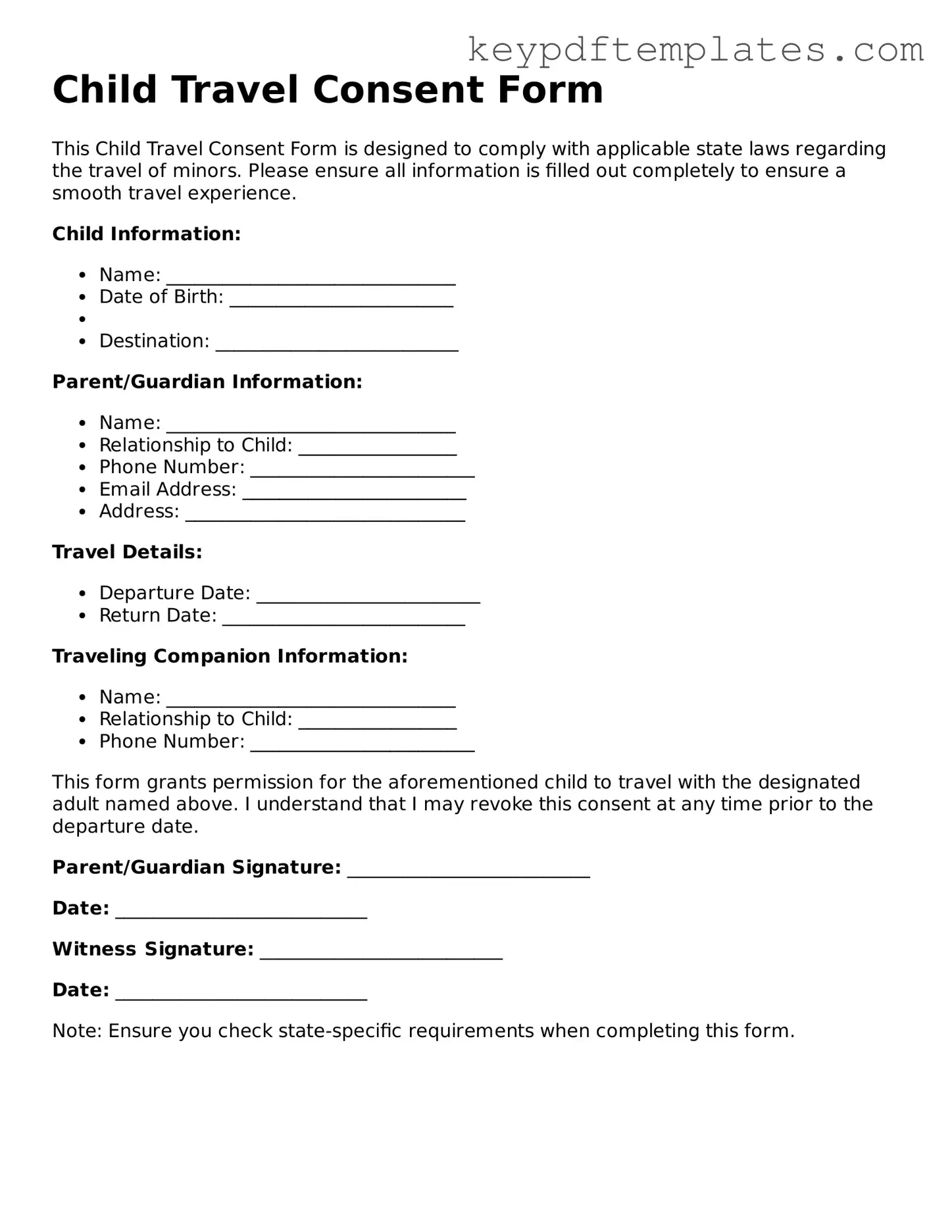Printable Child Travel Consent Form Template
The Child Travel Consent Form is a legal document that grants permission for a minor to travel without their parent or legal guardian. This form is essential for ensuring that children can safely travel with another adult, whether for vacations, school trips, or other activities. By providing this consent, parents help protect their child's rights and clarify travel arrangements.
Modify Document Online
